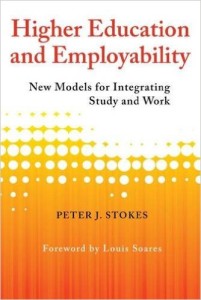Unemployable graduates. What does it really mean?
I guess, for example, if you cannot hire a Computer Engineering graduate to work as a programmer or a graduate degree holder in English fails to write a relevant commentary at a moment’s notice, you indeed have graduates that are not employable. But to look to hire programmers from a population where more than 80 percent of the graduate population is from a non-engineering or non-technical educational background, it is not the graduate that is unemployable. You just have a population that did not choose to study the subjects that have the most jobs right now.
To then say that institutes of higher education are failing is a wrong premise. Acting on which is like fixing a system that is not broken. What you need is more people with the right skills. And the only way to fix that problem is to retrain the graduates who have already exhibited the ability to learn and are adaptable.
I began my education in the US system – after four years of industry experience – with a firm belief that the curriculum should focus on what we did on the job. But by the end I firmly attested to the notion that higher education is much more than a narrow skill set that you may need to perform in your first job out of school.
Having said that, there a multiple ways where collaboration between Industry and Academia can ensure that the graduates have both: the broader analytical and critical thinking abilities and the more immediate skills required for the most-likely job profile.
 Higher Education and Employability: New Models for Integrating Study and Work
Higher Education and Employability: New Models for Integrating Study and Work
Author: Peter J. Stokes Pages: 224 Publisher: Harvard Education Press (August 11, 2015) Language: English ISBN: 1612508278, 978-1612508276
In Higher Education and Employability, Peter J. Stokes looks at the unemployability problem from various perspectives as he tries to find a solution to a current and present problem. Peter J. Stokes is the Managing Director of Huron Consulting Group and is a strategic consultant for higher education institutions.
He raises various questions like the role of employers in ensuring that the graduates coming out of the education system are equipped for the jobs they are expected to do. He also looks at education from the perspective of parents and students, for whom the ballooning education expenses fail to provide the promised returns – in terms of job and money.
I grew up in a country where the primary reason for higher education was the promise of a good job and a better, secure life. This mindset ensured that parents and students spent a lot of time in knowing which branch of study was most likely to get you that coveted job when the kid got out of college.
I believe The Great Recession and increasing education costs have brought ROI on education to the fore for most middle class families in the US.
This job-centric approach although practical, has its pitfalls. It is difficult to predict which industry will see the next technological innovation that will drive the economic boom. A population that is trained today for a certain industry will be rendered useless if some innovation changes the engine that runs the economy. This point is made quite well by Dan Schiller in Digital Depression.
Although there might be very little other than retraining that can change the current situation, some changes may be needed to the higher education system to make it more agile.
The author forcefully makes this point in Downproofing 2.0. He points out where the current education system is lacking and suggests alternative education models that will allow the students the flexibility to react to the market requirements. These alternate education models and various institutes that have employed them in some form are discussed in Innovators, Entrepreneurs, and the Threat of Substitutes.
The author systematically looks at a specific problem, possible solutions and the different ways in which the universities are responding to these specific problems throughout the book. The reader will hear about the reasoning behind applying each of the solutions and the author also presents counterpoint to each approach and highlights how balance is necessary to not turn institutions of higher education into vocational institutes.
In Higher Education and Employability, you will get to read about what the Industry thinks is wrong with the graduates and what Academia believes it is doing right. The innovative approaches to these problems will not only provide those in higher education new models to discuss the road ahead, but also help students understand and create a plan of what additional courses or skills they need to get the job they want after their graduation.